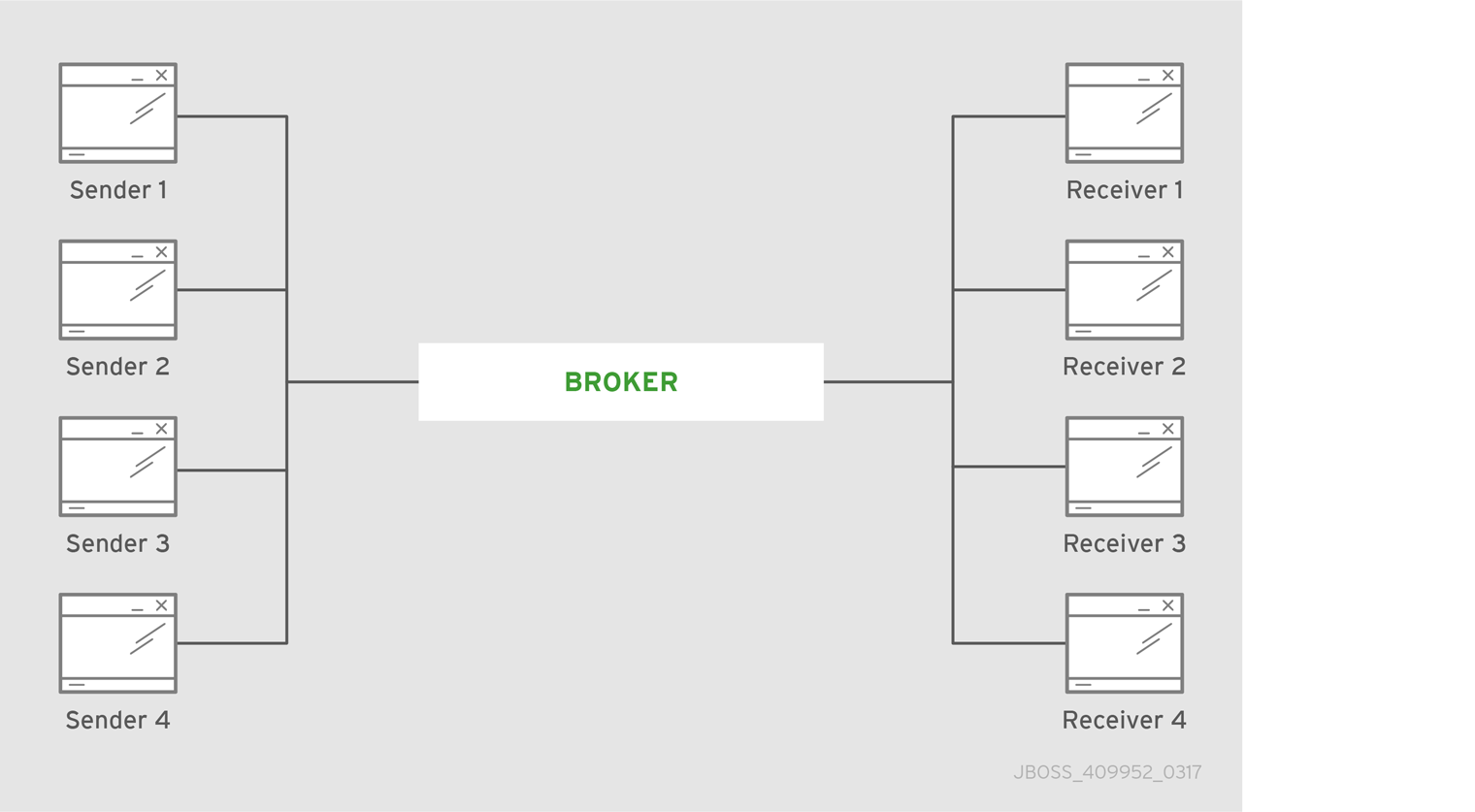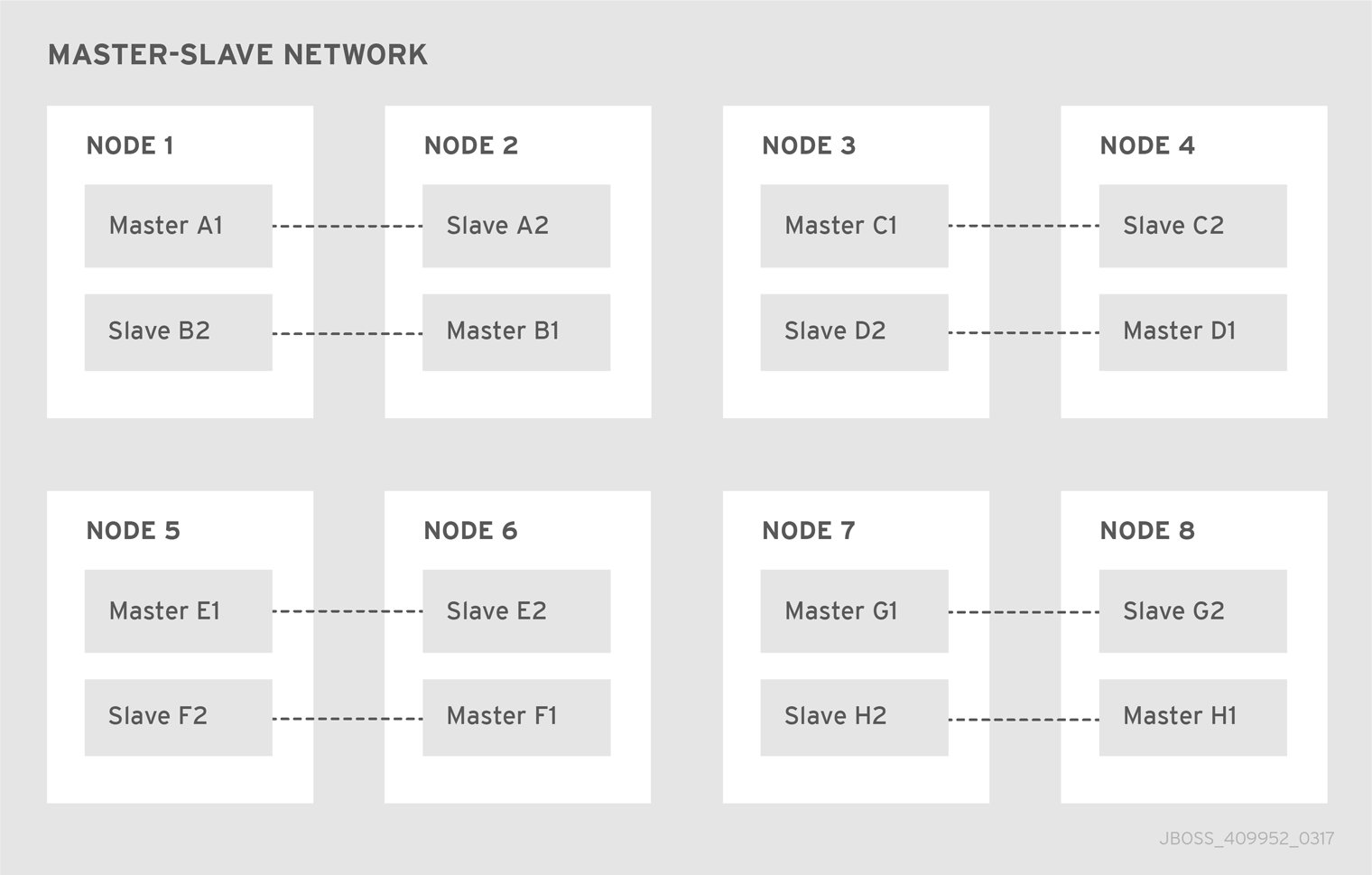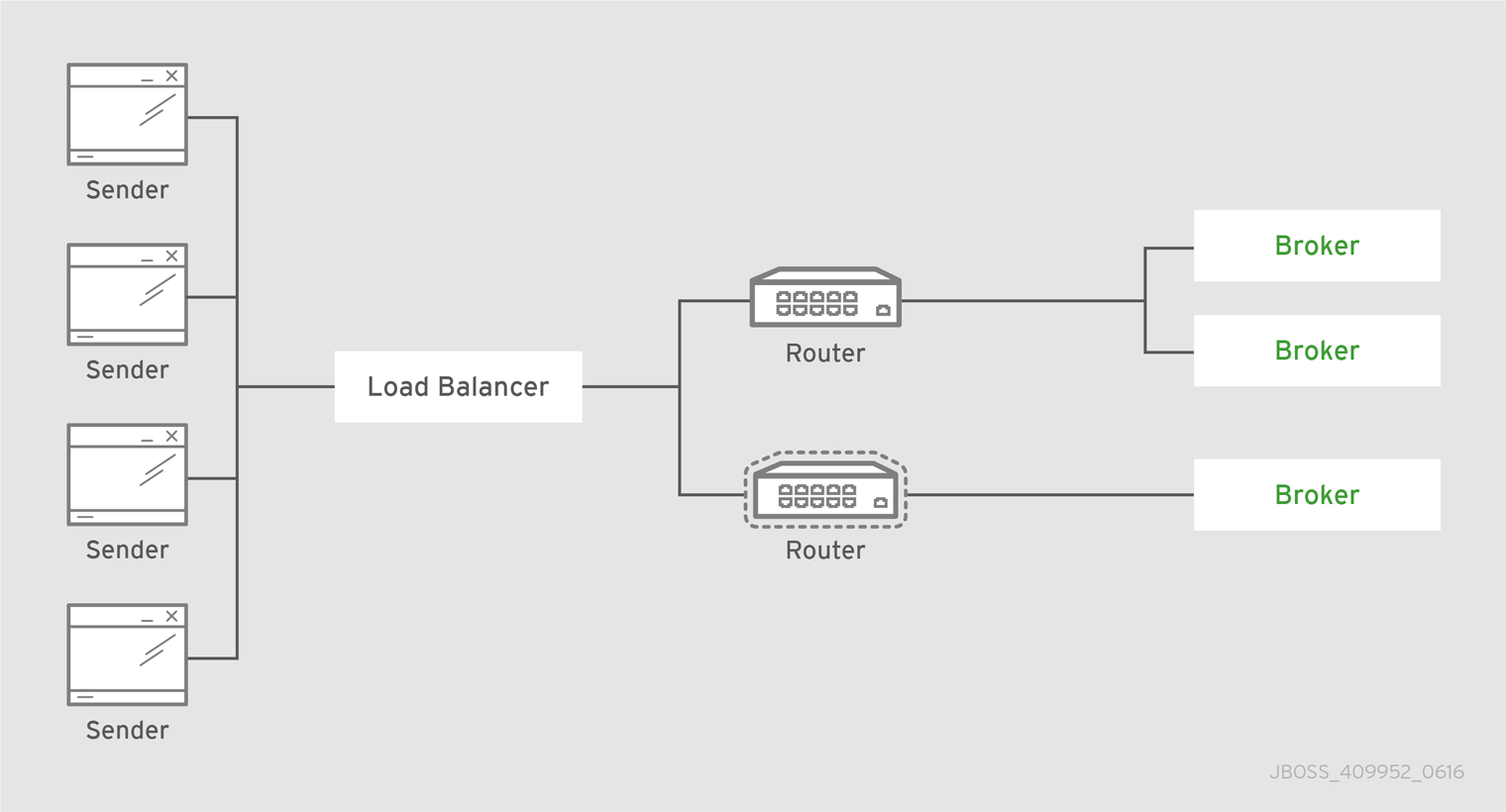-
Language:
English
-
Language:
English
Red Hat Training
A Red Hat training course is available for Red Hat AMQ
Chapter 3. Common Deployment Patterns
Red Hat AMQ 7 can be set up in a large variety of topologies. The following are some of the common deployment patterns you can implement using AMQ components.
3.1. Central Broker
The central broker pattern is relatively easy to set up and maintain. It is also relatively robust. Routes are typically local, because the broker and its clients are always within one network hop of each other, no matter how many nodes are added. This pattern is also known as hub and spoke, with the central broker as the hub and the clients the spokes.
Figure 3.1. Central Broker Pattern

The only critical element is the central broker node. The focus of your maintenance efforts is on keeping this broker available to its clients.
3.2. Routed Messaging
When routing messages to remote destinations, the broker stores them in a local queue before forwarding them to their destination. However, sometimes an application requires sending request and response messages in real time, and having the broker store and forward messages is too costly. With AMQ you can use a router in place of a broker to avoid such costs. Unlike a broker, a router does not store messages before forwarding them to a destination. Instead, it works as a lightweight conduit and directly connects two endpoints.
Figure 3.2. Brokerless Routed Messaging Pattern

3.3. Highly Available Brokers
To ensure brokers are available for their clients, deploy a highly available (HA) master-slave pair to create a backup group. You might, for example, deploy two master-slave groups on two nodes. Such a deployment would provide a backup for each active broker, as seen in the following diagram.
Figure 3.3. Master-Slave Pair

Under normal operating conditions one master broker is active on each node, which can be either a physical server or a virtual machine. If one node fails, the slave on the other node takes over. The result is two active brokers residing on the same healthy node.
By deploying master-slave pairs, you can scale out an entire network of such backup groups. Larger deployments of this type are useful for distributing the message processing load across many brokers. The broker network in the following diagram consists of eight master-slave groups distributed over eight nodes.
Figure 3.4. Master-Slave Network

3.4. Router Pair Behind a Load Balancer
Deploying two routers behind a load balancer provides high availability, resiliency, and increased scalability for a single-datacenter deployment. Endpoints make their connections to a known URL, supported by the load balancer. Next, the load balancer spreads the incoming connections among the routers so that the connection and messaging load is distributed. If one of the routers fails, the endpoints connected to it will reconnect to the remaining active router.
Figure 3.5. Router Pair behind a Load Balancer

For even greater scalability, you can use a larger number of routers, three or four for example. Each router connects directly to all of the others.
3.5. Router Pair in a DMZ
In this deployment architecture, the router network is providing a layer of protection and isolation between the clients in the outside world and the brokers backing an enterprise application.
Figure 3.6. Router Pair in a DMZ

Important notes about the DMZ topology:
- Security for the connections within the deployment is separate from the security used for external clients. For example, your deployment might use a private Certificate Authority (CA) for internal security, issuing x.509 certificates to each router and broker for authentication, although external users might use a different, public CA.
- Inter-router connections between the enterprise and the DMZ are always established from the enterprise to the DMZ for security. Therefore, no connections are permitted from the outside into the enterprise. The AMQP protocol enables bi-directional communication after a connection is established, however.
3.6. Router Pairs in Different Data Centers
You can use a more complex topology in a deployment of AMQ components that spans multiple locations. You can, for example, deploy a pair of load-balanced routers in each of four locations. You might include two backbone routers in the center to provide redundant connectivity between all locations. The following diagram is an example deployment spanning multiple locations.
Figure 3.7. Multiple Interconnected Routers

Revised on 2018-07-16 16:08:02 EDT

